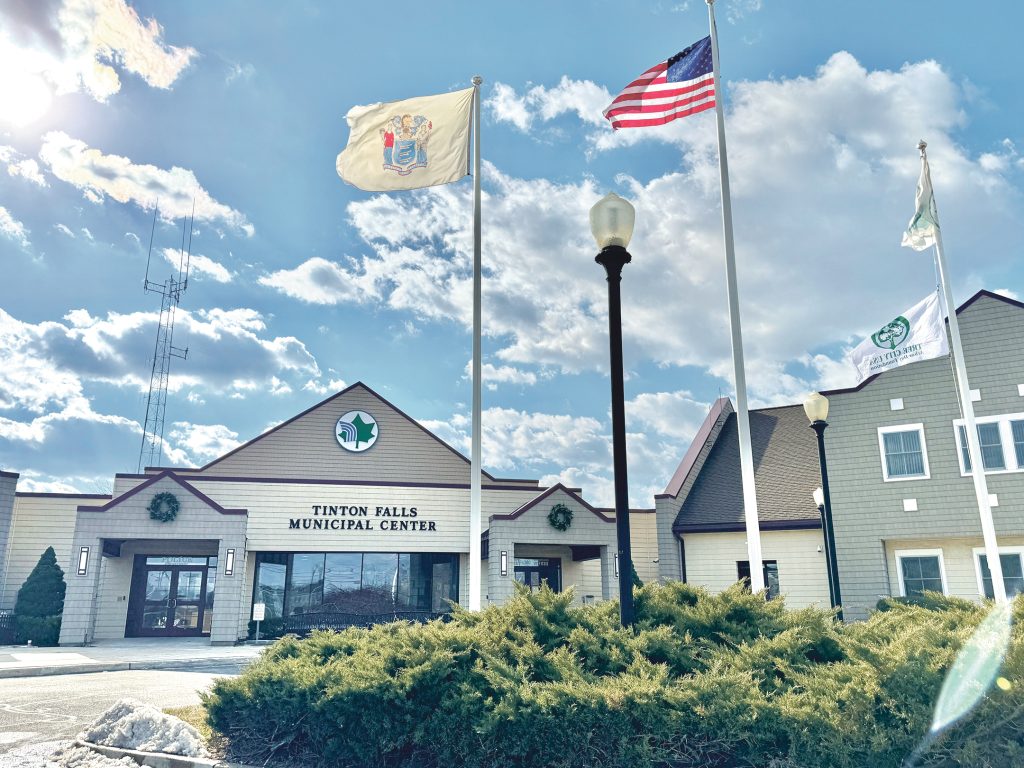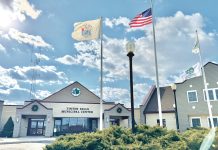
By Sunayana Prabhu
TINTON FALLS – Borough officials presented a 2025 municipal budget of just over $31 million that decreases the municipal tax rate by 2.12% while preserving the services residents have come to expect.
At the April 15 borough council meeting, the borough’s chief financial officer, Thomas Fallon, explained that the tax rate reduction is possible because of a 6.21% increase in taxable assessed values – $5.265 billion in 2024 to $5.592 billion in 2025. This substantial growth, Fallon noted, coupled with a 3.8% increase in the amount to be raised by taxation, ultimately resulted in the municipal tax rate decrease from 33 cents to 32.3 cents per $100 of assessed property value.
“Tinton Falls has the third lowest average residential property taxes out of the 53 municipalities in Monmouth County,” Fallon told the council, noting the budget’s strength. “The borough of Tinton Falls’ budget structure continues to result in a positive position and available cash and reserves, which adds to our ability to stabilize the tax rate and weather economic downturns.”
Budget Revenue Sources
Municipal taxes are projected to raise 58%, or $18,061,251, of the total $31,003,970 municipal budget. Various other revenue sources cover the remainder, including state aid of $1,508,232 and local licenses, fees and permits, construction code fees, and court fines, which total $1.695 million. The borough anticipates collecting $620,000 in delinquent taxes and another $310,000 from its shared services agreement with the Borough of Eatontown for municipal court services.
Over $3.5 million is anticipated from fees the borough receives for hosting the Monmouth County Reclamation Center; cable and FiOS franchise fees; hotel occupancy taxes; operating grants; and a PILOT (in Lieu of Taxes) payment from the acquisition of Commvault headquarters by Bell Works owners.
The borough will also use $5.25 million – about half – of its surplus fund for the budget.
“The more nonutilized fund balance the borough has on hand, the better we are positioned to manage emergencies and unexpected economic issues and to stabilize taxes,” Fallon said.
The Spending Plan
Public safety takes the biggest chunk of the borough’s total spending plan or budget appropriations. Nearly $7 million is spent on public safety, including police, emergency management, fire prevention and the municipal prosecutors’ office.
Statutory expenditures have increased by 6.3%, “primarily due to a 12.5% increase in the required state pension payment for our police,” said Fallon.
Pension costs make up $2.8 million of the budget, which includes the police and public employees’ retirement fund. Fallon said these appropriations have increased by nearly $1 million since 2015. According to Fallon, the required contributions under these state-run pension systems are calculated and provided to the borough by the state.
The municipality’s operating expenses make up a sizable portion of the total 2025 budget, having increased by 3.8% from the 2024 budget, largely due to increases in municipal employee salaries and wages, Fallon explained.
Almost $3.8 million of the 2025 bud- get will go to employee group health insurance, an increase of $492,000 from the 2024 budget. General government appropriations make up nearly $2.6 million, including services provided by the borough’s administration office, law and engineering departments, among others.
The department of public works has been allocated almost $4.3 million, and capital improvements make up nearly $1 million of the total budget.
The total debt service appropriations have remained stable at approximately $2.5 million. “From 2014 through 2024, the borough has reduced net debt by almost $8 million,” said Fallon. “This was achieved by modifying the capital and debt management strategy, where the borough invests more than ever in its infrastructure and capital needs but funds a much larger percentage in the operating budget, and not by the issuance of debt.”
Components of the 2025 Tax Bill
In a breakdown of a resident’s total property tax bill, the municipal tax levy is 23%. The funds will be used to provide a range of “essential” and “quality-of-life services,” said Fallon.
Essential services include public safety and public works, solid waste removal and disposal, public health services, municipal court and justice services, tax collection and distribution, property assessment, zoning and housing enforcement, an emergency notification system, curbside recycling, and others.
Quality-of-life services include parks and recreation programs, sports playing fields, summer camp programs, open space acquisition and maintenance, affordable housing, historic preservation, and borough library services.
The largest portion of a resident’s tax bill goes toward schools, with 20% allocated for the high school budget and 38% for the elementary school budget; 15% is allocated for the county budget and 3% for the fire district. There is also a 1% municipal open space tax.
Tax rates are determined by property values, which are reassessed every year.
The public hearing for the budget is scheduled for the May 20 council meeting, where residents can review and comment on the proposed spending plan.
The article originally appeared in the May 15 – 21, 2025 print edition of The Two River Times.














